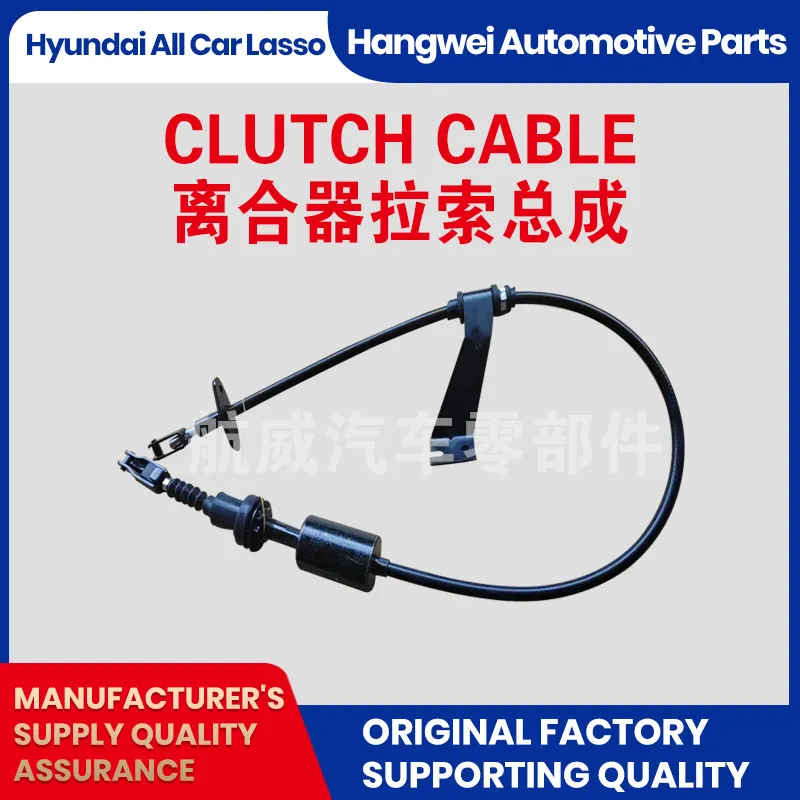Clutch Line: Durable, OEM-Fit, Leak-Free Performance
Clutch Push-Pull Cable: The Quiet Hero Behind a Clean Shift
Everyone talks about transmissions, but the humble clutch line is the unsung link between intention and motion. I’ve toured plants, talked to mechanics, and (yes) stalled a few test cars—so consider this an insider’s snapshot of what’s changing and what matters.

Industry trends (quick and real)
Manual transmissions aren’t dead; they’re specializing. We’re seeing higher torque small engines, off-road/utility vehicles, and enthusiast builds. That puts pressure on the clutch line to deliver smoother pedal effort, longer life, and better corrosion resistance. Vendors are moving to low-friction liners, hybrid wire strands, and tighter tolerance end fittings. In fact, salt-spray and cyclic testing are getting tougher year by year.
What this product is (and where it’s from)
Product: Clutch Push-Pull Cable. Origin: Qinghe County Minjiang Street south, Wuzhishan Road east. The brand’s claim is pretty straightforward: advanced materials + strict QC = durability under mixed conditions. Sounds simple, but the devil is in the process.
Process flow and materials (how it’s actually built)
- Materials: multi-strand galvanized or stainless steel core; PTFE-lined polymer conduit; UV-stable outer jacket; zinc-nickel plated end fittings.
- Methods: precision stranding, preforming to reduce stretch, swaged ends, crimp force verification, and low-friction liner insertion.
- Testing standards: salt spray per ASTM B117/ISO 9227; dimensional checks; cyclic actuation (≈300k–1,000k cycles, real-world use may vary); pull-to-break tensile validation.
- Service life target: ≈150k–250k km in typical light-vehicle duty, assuming proper routing and zero contamination.
- Industries: passenger cars, light trucks, agricultural equipment, construction machinery, motorcycles, and some marine controls.
Product specifications (typical)
| Parameter | Spec (typical) | Notes |
|---|---|---|
| Core wire | 7×7 or 7×19 stainless/galvanized | Choice depends on tensile vs. flexibility |
| Outer jacket | PE/PVC with UV stabilizers | Black standard; colors on request |
| Operating temp | ≈ −40°C to +120°C | Peaks depend on liner material |
| Corrosion resistance | ≥240 h neutral salt spray | Per ASTM B117 / ISO 9227 |
| Cycle life | ≥500,000 cycles | Application and routing sensitive |
Advantages in use
Lower pedal effort (the PTFE liner helps), smoother modulation, and quieter operation. Many customers say the clutch line “disappears” after install—no drama, just consistent bite point, which is exactly the point.
Application scenarios
- Daily commuter with frequent stop-go traffic (fatigue resistance matters).
- Off-road vehicles facing mud/salt spray (sealed ends and anti-corrosion are key).
- Performance builds needing tighter tolerances and minimal stretch.
Customization options
You can spec stroke length, end fittings (clevis, barrel, ball stud), jacket color, liner material, and bracket geometry. I’ve seen teams shave noticeable pedal effort by just changing liner + routing angles. Small tweaks, big feel.
Vendor comparison (what buyers actually weigh)
| Vendor | Cycle Life (≈) | Salt Spray (≈) | Certifications | Customization |
|---|---|---|---|---|
| HWei Cable (Qinghe) | 500k–1,000k cycles | ≥240 h | ISO 9001, IATF 16949 (reported) | High (ends, stroke, routing) |
| Generic Importer | 200k–400k cycles | 96–240 h | Varies | Medium |
| Aftermarket Brand X | 300k–600k cycles | ≥240 h | ISO 9001 | Medium–High |
Case notes from the field
A light-truck fleet swapped in this clutch line spec for vehicles operating on salted winter roads. After 18 months, warranty claims dropped by ~35%. Not jaw-dropping, but in fleet math, that’s real money. Another tuner shop told me their customers noted a steadier engagement point after heat cycles—less “creep” as the cable beds in.
Compliance and verification
Look for ISO 9001/IATF 16949 quality systems, documented salt-spray results (ASTM B117 or ISO 9227), and Bowden cable dimensional controls (DIN 71984 guidance is useful). To be honest, paperwork doesn’t shift gears for you—but it does predict fewer headaches down the road.
Final thought
A good clutch line should be invisible. If you notice it, something’s off. Spec wisely, route cleanly, and ask for the test data.
-
Clutch Line: Braided, Leak-Proof, OEM-Grade PerformanceNewsNov.10,2025
-
Throttle Cable: Durable, Smooth Control & Universal FitNewsNov.10,2025
-
Throttle Cable: Durable, Smooth, Universal Fit, Easy InstallNewsNov.10,2025
-
Clutch Line: Durable, Leak-Proof, OEM-Grade PerformanceNewsNov.10,2025
-
Hand Brake Cable | Custom, Universal & Trailer SolutionsNewsNov.10,2025
-
Clutch Line: High-Pressure, OEM-Fit, Corrosion-ResistantNewsNov.03,2025
